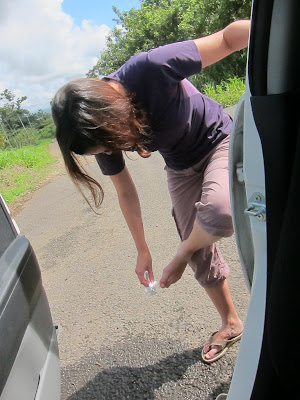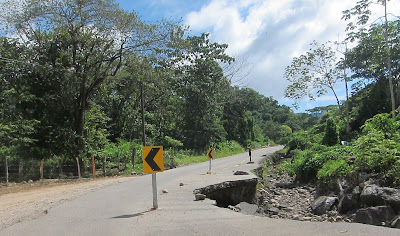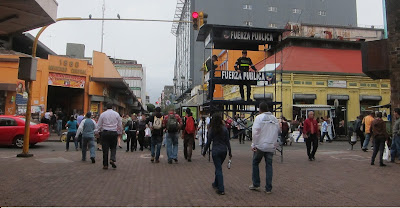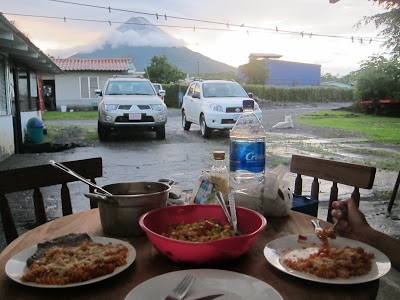We did not know exactly what to visit in Central America. Then Axelle remembered the colored posters of Costa Rica in her former boss' office. We contacted him and he was of great help to advise us on our itinerary. Thank you Antonio! :)
Indeed Costa Rica is a wonderful country to visit, the kingdom of green, where the luxuriant vegetation explode on every square kilometer, teemed with exotic animals! Our days were numbered so our programme intense.
Gulf of Nicoya
Day 1: Arrival at San José international airport at dusk. As always, a little stop at the tourist information point to check how to get to our hostel. Taxis were 30$ but we managed to take the bus to downtown for 2$ and from there a 4$ taxi drive to the suburbs where we spent the night... One way of cutting back on spending!
Day 2: We got our car at the rental agency (fortunately they no longer had the basic car we booked so we ended up with a small 4x4 which would turn out to be very useful...) and we headed toward the center of the country. We arrived at La Fortuna after a three hours ride and visited the nearby La Fortuna waterfall.
Day 3: Visit of an indigenous Maleku village near Guatuso. A Maleku souvenirs seller was eager to share his culture and the preoccupation of his people. We spent one hour listening to him and he made our day! We came back to La Fortuna just in time to admire the Arenal Volcano with almost no clouds around it! Beautiful!
Arenal Volcano, one of the most active volcanoes in the world
(but it has been asleep since last December..)
In the afternoon we drove from La Fortuna to Tamarindo (230 kilometers, 5 hours drive) with a couple of strange meetings on the road:
Fighting with itchy tiny ants after being attacked while taking a picture...
Day 4: Walk along Tamarindo beach to the office of Las Baulas National Park where we realized it was not the right season to observe giant turtles! :(
We then went along the coastline toward the other beaches south, until Samara. This road is really awful: we drove for 190 kilometers and half of them were off-road while they were indicated as classic national roads in our maps. A lot of mud (thanks to the rainy season!), potholes and even a few rivers to cross!
Yep, we did cross it! ;)
Day 5: Five hours drive between Tamarindo and Montezuma (200 kilometers) to arrive in our hut in the jungle! In fact our hostel was surrounded by a thick rainforest where we witnessed the amazing local wildlife.
A very enjoyable experience to have a dinner watching monkeys and iguanas on the trees, to be rocked by a tropical shower or the sound of the nearby ocean, and to be awaken by two black monkeys looking for food on the veranda in front of our window or by the fight of two angry anteaters!
Day 6: Look at Montezuma's waterfall before a nice walk along the beach which ended with a swim in the ocean!
Day 7: Back to San Jose (320 kilometers, 6 hours drive).
Oops...
Day 8: Walk in downtown San José. Two pedestrian streets, a few lively covered market, a handful of colonial houses, a nice national theater and some green squares.
On the left, the central market. Notice the policemen on their podium!
Central market

















































